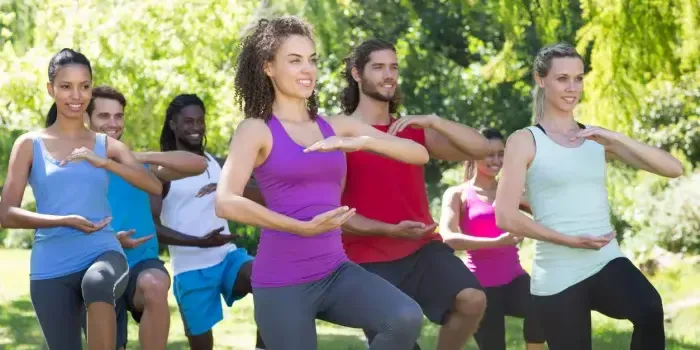Amr Elbeshir was bored with going to the gym and lifting weights. He wanted something that would exercise his mind and his body. What he found was tai chi. “Tai chi allowed me to visualize being healthy,” he says. That was 14 years ago. Elbeshir, now 43, has been practicing the ancient martial art ever since. “It felt like it belonged to me,” says Elbeshir, who has moderate hemophilia B and hepatitis C. He is CEO of Phoenix Therapeutic Foundation, an outpatient mental health clinic in Baltimore.
Tai chi originated in China. Practiced both as a form of self-defense and as moving meditation, it is characterized by slow, graceful and continuous movements, as well as deep, controlled breathing. Tai chi engages many muscle groups in the 100 or so movements and postures in its repertoire.
Practitioners of traditional Chi-nese medicine believe tai chi enhances the flow of qi, or vital energy, thereby promoting well-being. “Tai chi” is often translated as “internal martial art.” “There are a lot of benefits to tai chi,” says physical therapist Angie Forsyth, PT, DPT, of the Penn Comprehensive Hemophilia and Thrombosis Program in Philadelphia. “It can help to build strength and improve balance and flexibility.”
Elbeshir says that since he began practicing tai chi, he has gained strength, particularly in his legs. “My ankles and knees have become much stronger,” he says.
According to the National Center for Complementary and Alternative Medicine (NCCAM), tai chi may have additional benefits. Research suggests it can lower blood pressure, enhance the immune system and increase energy. Also, it’s thought to relieve pain and stiffness, and improve heart health, balance and sleep. Forsyth says it’s a good match for people with bleeding disorders. “The movements are slow and controlled, so it carries little risk,” she says. “You can modify it to your needs and abilities. You can even do it from a seated position.”
While tai chi is low impact, it’s still exercise, and you could experience sore muscles or ankle sprains, cautions NCCAM. Be sure to speak with your physical therapist (PT) to help determine if tai chi is right for you. Your PT can advise you on what you can do and what you should avoid to protect joints that may be prone to bleeds.
Take a Class
The best way to learn tai chi is by taking a class. Elbeshir spent two years at the Full Circle Martial Arts Academy outside Washington, DC, before he began to practice it on his own. Now, he does 30 to 45 minutes of tai chi at home two or three times a week.
If there are no martial arts schools near you, your local gym may conduct tai chi classes. Classes also help keep you motivated, especially if you sign up with a friend. “If you want to try tai chi, and you are cleared by your treatment center, enroll in a class with an instructor,” Forsyth says. If classes do not appeal to you, try an instructional DVD. However, says Forsyth, only a teacher can tell you if your movements and posture are correct.
Several tai chi organizations offer instructor certification, but instructors do not have to be licensed and there is no standard training, according to NCCAM. Forsyth says it’s essential that an instructor be willing to talk to your PT or HTC staff to tailor your workout to any limitations you may have.
With its gentle movements and deep breathing, tai chi helps people relax and induces calm, thereby reducing stress. Elbeshir says tai chi makes him feel better in just about every way. “When I do tai chi, it rids me of the negative stuff I carry around and allows me to be more patient, to be more positive,” he says. “If you do it enough, these qualities will come.”

